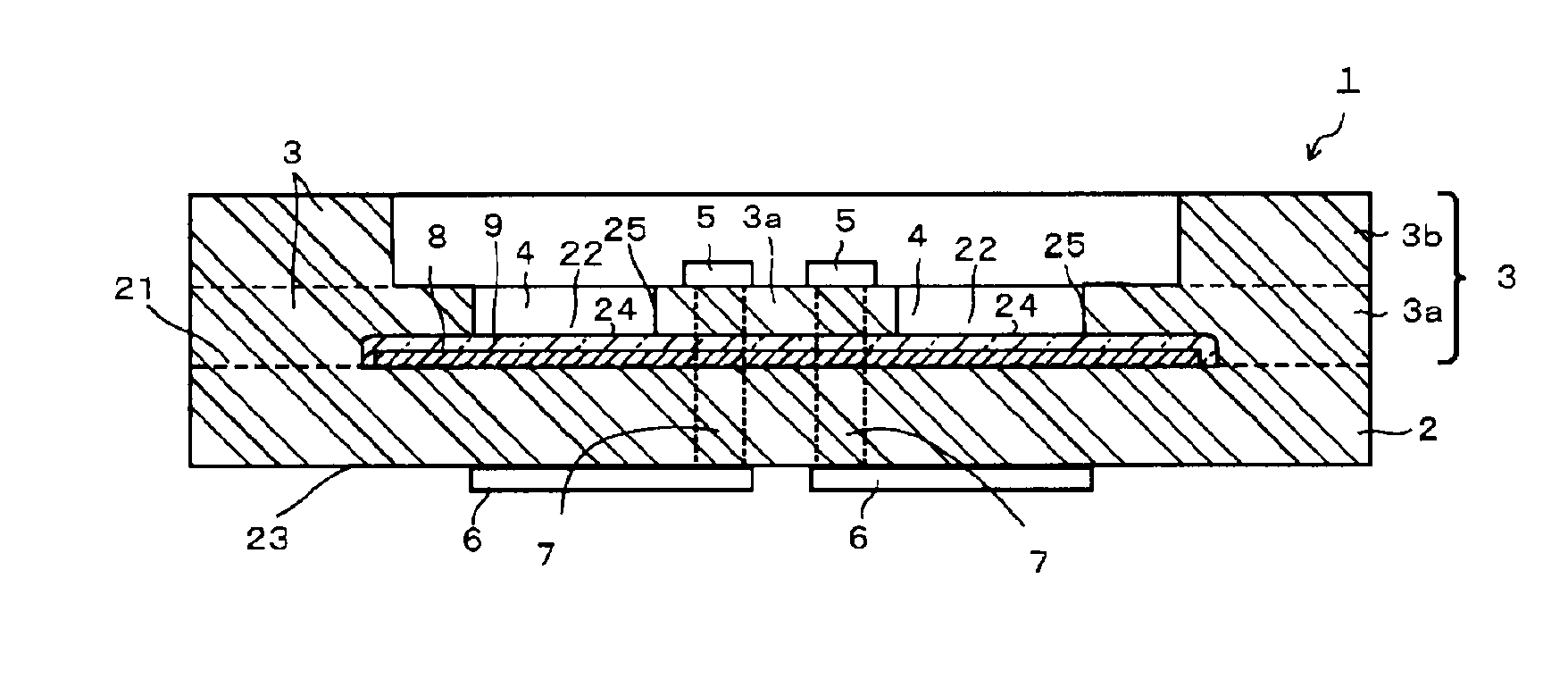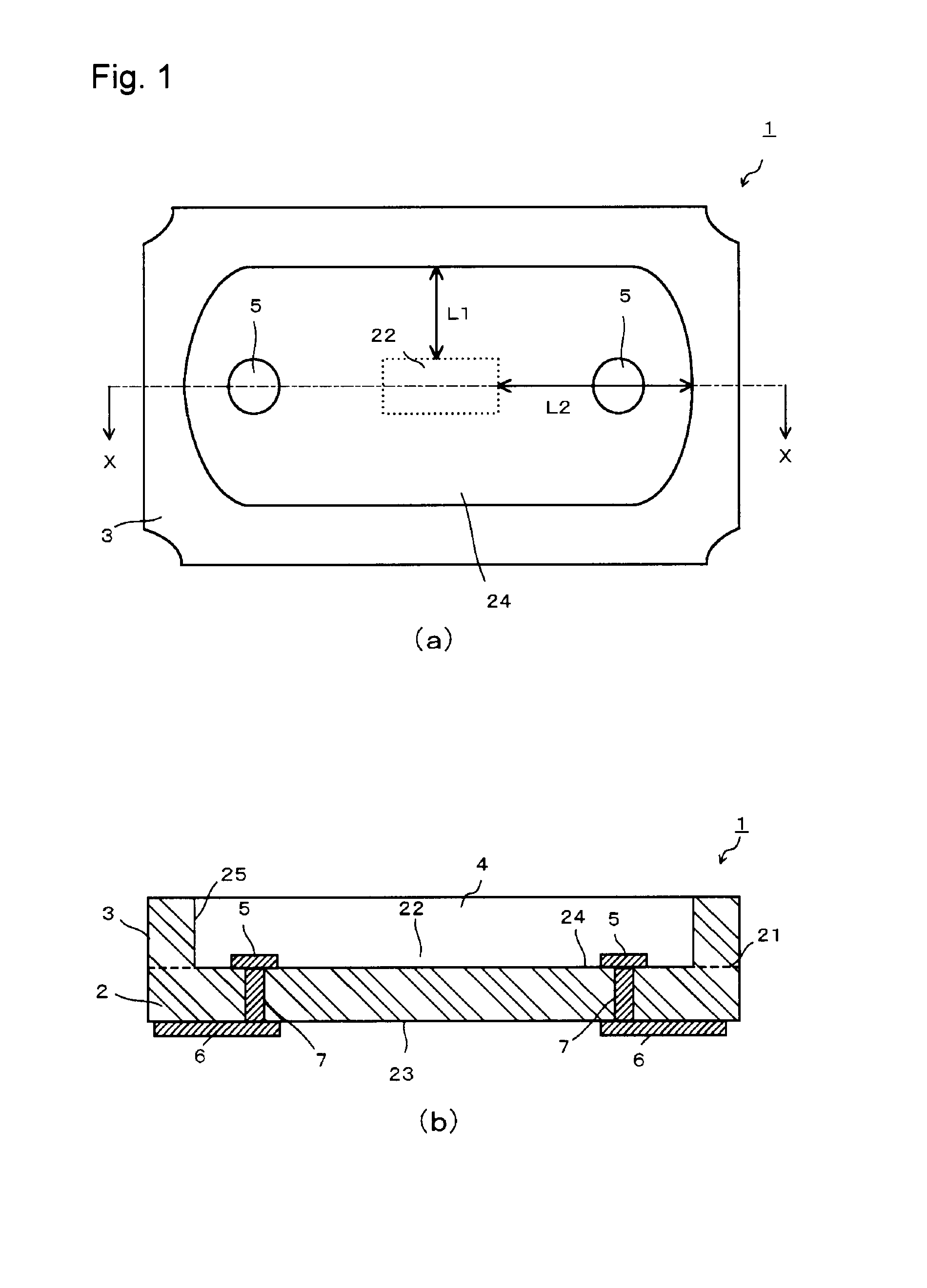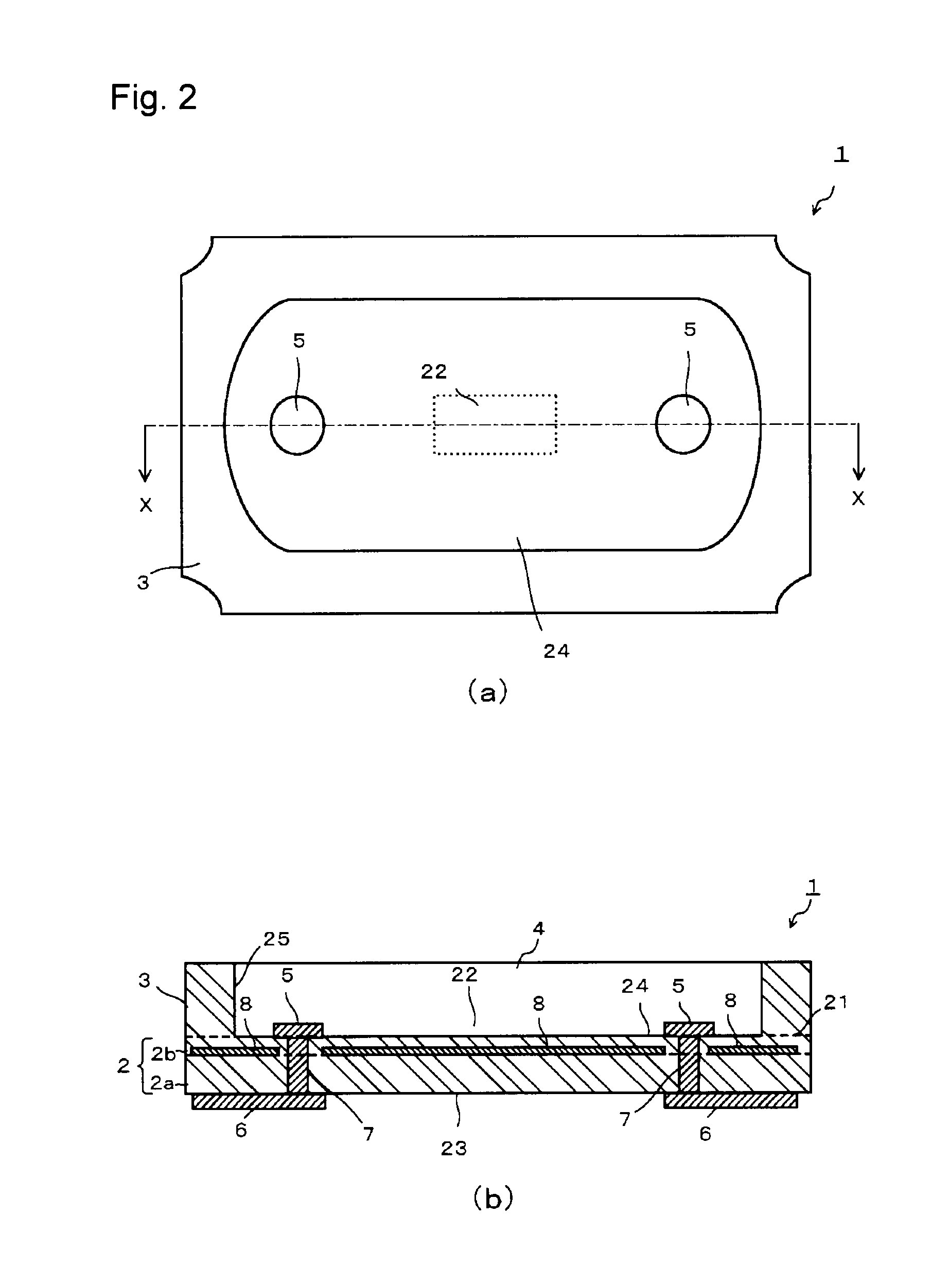Substrate for light-emitting element and light-emitting device employing it
- Summary
- Abstract
- Description
- Claims
- Application Information
AI Technical Summary
Benefits of technology
Problems solved by technology
Method used
Image
Examples
first embodiment
[0036]FIG. 1 is a plan view (a) illustrating an example of the substrate 1 for light-emitting element to mount one light-emitting element as the first embodiment of the present invention, and a cross-sectional view (b) along its X-X line.
[0037]The substrate 1 for light-emitting element has a substantially flat-form base member having a substantially rectangular shape as viewed from above and mainly constituting the substrate. The base member 2 has the upper side surface as the main surface 21 on which a light-emitting element is to be mounted when used as a substrate for light-emitting element, and in this example, the opposite side surface is regarded as a rear surface 23. The substrate 1 for light-emitting element further has a frame member 3 bonded along the periphery of the main surface 21 of the base member to constitute a concave 4 having a bottom surface 24 constituted by a substantially rectangular portion at the center of the main surface 21 of the base member 2. Here, the ...
second embodiment
[0102]Now, as the second embodiment of the present invention, a substrate for light-emitting element to mount a plurality of light-emitting elements will be described.
[0103]FIG. 6 is a plan view (a) and a cross-sectional view (b) along its X-X line, illustrating an example of the substrate 1 for light-emitting element to mount plural, e.g. four, light-emitting elements as a second embodiment of the present invention.
[0104]The substrate 1 for light-emitting element according to the second embodiment of the present invention may, for example, be one on which, as shown in FIG. 7, four light-emitting elements 11 are to be mounted so that they are electrically connected in series at substantially circular positions in e.g. a quadrangular shape. In such a substrate 1 for light-emitting element, the light-emitting elements 11 are electrically connected in series by bonding wires 12, and a sealing layer 13 is provided to cover such light-emitting elements 11 and bonding wires 12, so that it...
example 1
[0147]By the following process, a light-emitting device for test was prepared wherein one light-emitting element 1 having the same structure as shown in FIG. 3 was mounted. Here, in the same manner as above, the same symbols are used for the components before and after the firing.
[0148]Firstly, a green sheet 2 for base member and a green sheet 3 for frame member were prepared to prepare the base member 2 and the frame member 3 for the substrate 1 for light-emitting element. For each green sheet, raw materials were blended and mixed so that SiO2 became 60.4 mol %, B2O3 15.6 mol %, Al2O3 6 mol %, CaO 15 mol %, K2O 1 mol % and Na2O 2 mol %, and this raw material mixture was put into a platinum crucible and melted at 1,600° C. for 60 minutes. Then, this molten state glass was cast and cooled. This glass was ground by a ball mill made of alumina to obtain a glass powder. Here, ethyl alcohol was used as the solvent at the time of grinding.
PUM
 Login to View More
Login to View More Abstract
Description
Claims
Application Information
 Login to View More
Login to View More - R&D
- Intellectual Property
- Life Sciences
- Materials
- Tech Scout
- Unparalleled Data Quality
- Higher Quality Content
- 60% Fewer Hallucinations
Browse by: Latest US Patents, China's latest patents, Technical Efficacy Thesaurus, Application Domain, Technology Topic, Popular Technical Reports.
© 2025 PatSnap. All rights reserved.Legal|Privacy policy|Modern Slavery Act Transparency Statement|Sitemap|About US| Contact US: help@patsnap.com



